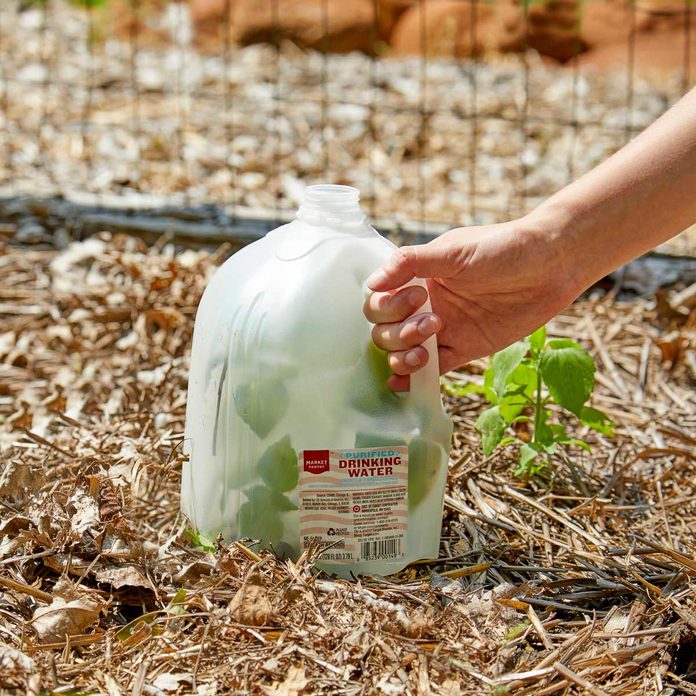
Protect Your Plants with Milk Jugs
Worried about the new baby plants you just planted? Cut the bottoms out of gallon jugs and set them over new and fragile plants to protect them from bugs or a late frost. We love these fast-growing plants that maximize your curb appeal.
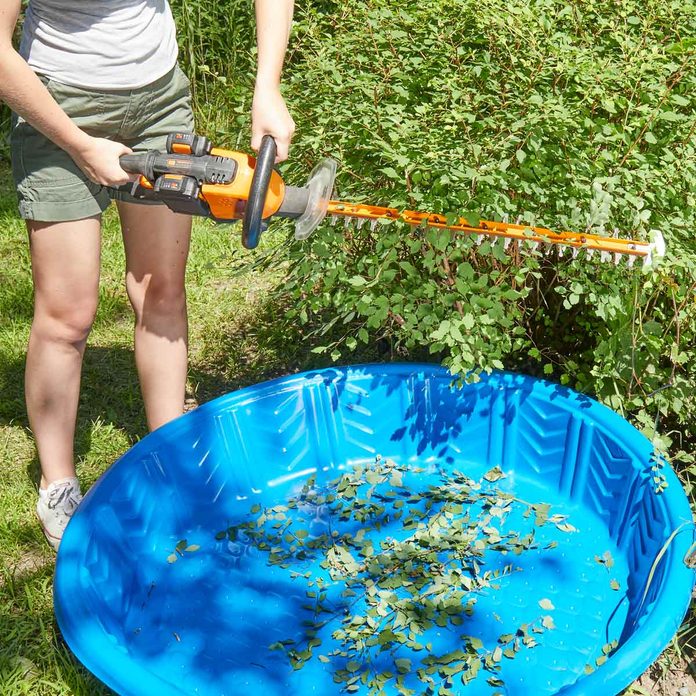
Corral Your Clippings
When trimming hedges, use a plastic kiddie pool to catch clippings, kicking it along as you clip. The clippings fall into the pool, making cleanup a snap. When you’re done trimming, dump the clippings into your mulch pile.
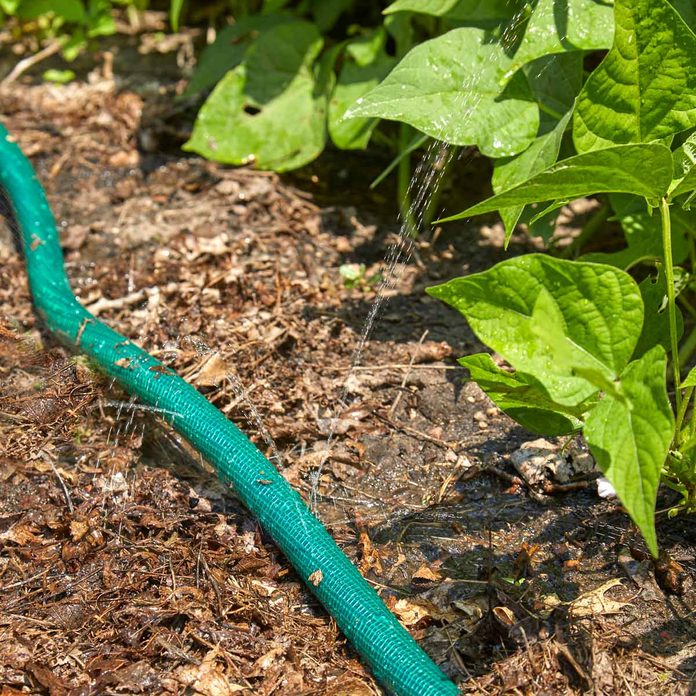
DIY Drip System
Here’s an easy way to turn any hose into a drip-watering hose. Drill 1/8 in. holes every 2 in. and screw a cap the end. Weave the hose around your plants and turn on the spigot. To make watering even easier, you can add a programmable faucet timer to the hose. Want to add more color to your landscape this season?

Garden Sprayer Labels
It seemed any time I’d mix something in my garden sprayer, I’d have some leftover, but I’d always forget what was in the bottles. So, I bought a set of key labels and marked them GoMax, Aphid Spray, etc. Now, when I mix one of these chemicals in my garden sprayer, I clip on the appropriate key label. I keep the rest on my pegboard, so I can easily switch them out when I mix something different. — David Watermeier
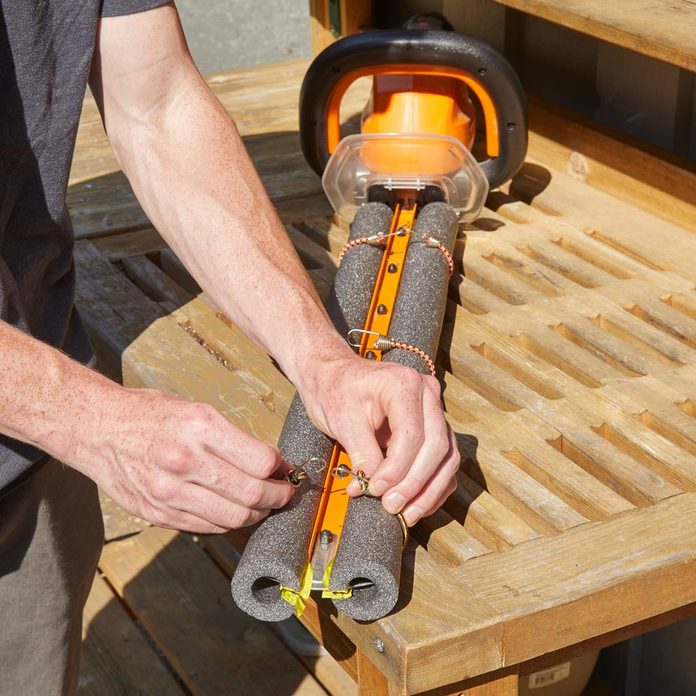
Hedge Trimmer Sheath
I lost my hedge trimmer blade sheath, so I had to get creative to safely store the tool. A piece of foam pipe insulation was just right. I cut two 1/2 in. foam tubes to the length of the hedge trimmer blade. The tubes are slit down their length, so they slide easily over the blades. Three 4 in. bungee cords hold them in place. — Thomas Curran
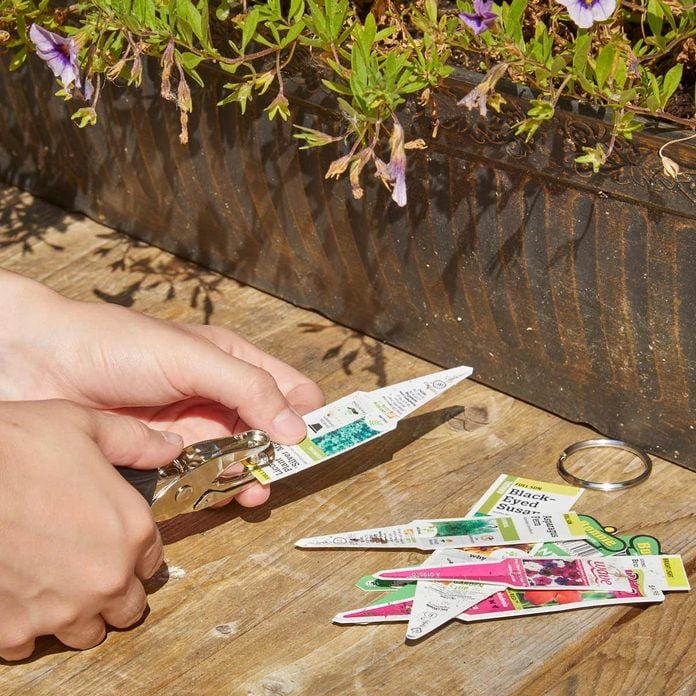
Plant Tag Organizer
You know those plant tags you save to reference later, but aren’t exactly sure what to do with? To keep them organized, punch holes in the tags and slide them onto a key ring.
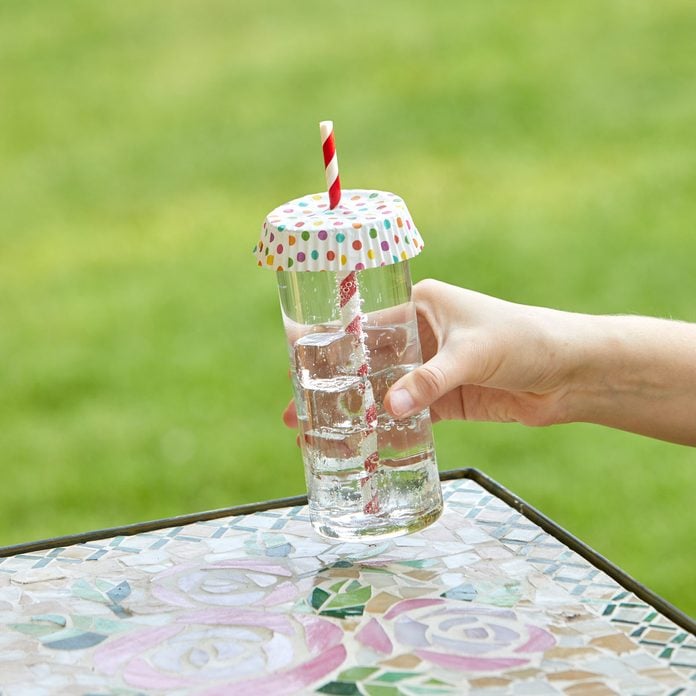
Cocktail Caps
Keep bugs from swimming in your drinks by topping glasses with baking cup liners. Cut a small X into the center of each liner, poke a (reusable or paper) straw through the hole and enjoy your beverage pest-free.
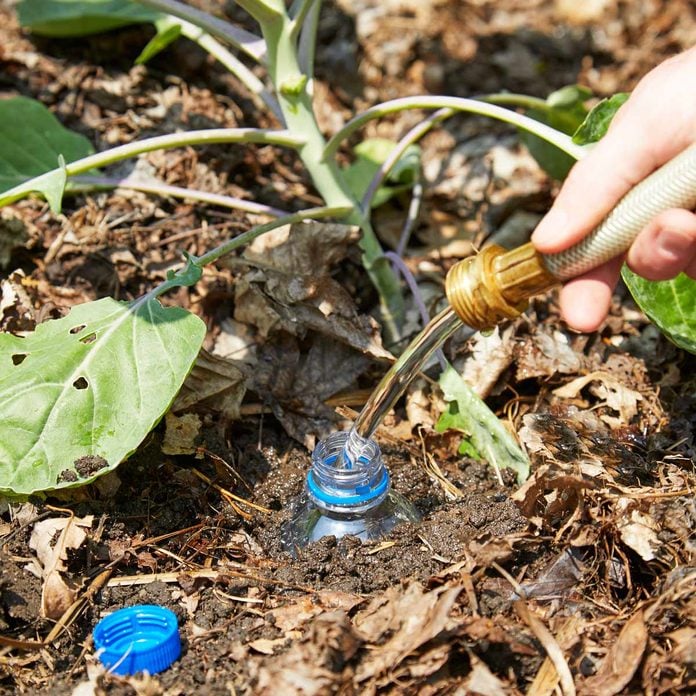
Direct Watering Bottle
For healthy plants, it’s important to get water to the roots. Here’s my method: I drill holes in water bottles and bury them alongside my plants, leaving just the cap above the ground. To water the plants, I unscrew the bottles’ caps, fill the bottles and screw the caps back on. It requires some extra effort, but it conserves water, and my plants—especially the tomatoes—are thriving like never before. — Diane Newman

Utility Tackle Box
After 20 years of fishing, I’ve accumulated a few extra tackle boxes. Instead of throwing them away or just piling them in the garage, I fill them with toiletries, first-aid supplies and other camping and fishing gear. Tackle boxes keep these odds and ends organized and easy to pack. — Matt Boley
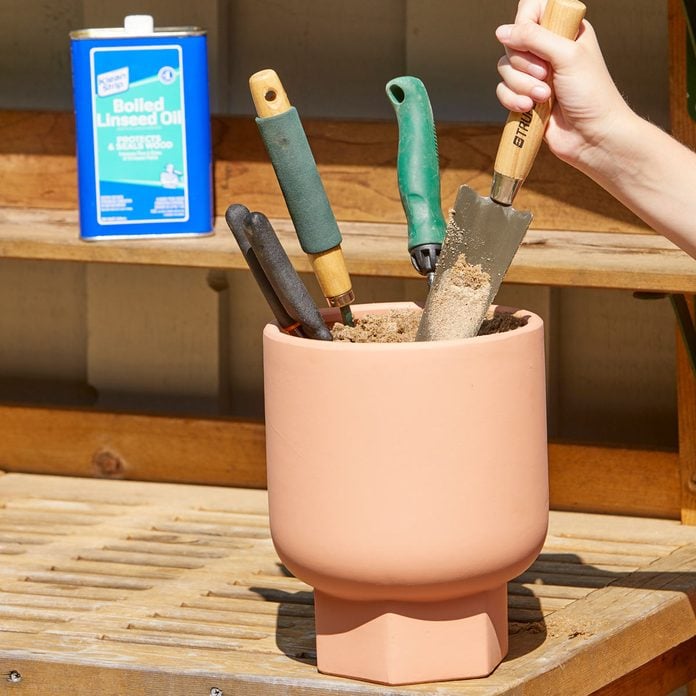
No-Rust Garden Tools
Regular maintenance keeps your garden tools clean and rust-free. To avoid much of that maintenance, fill a bucket with sand and mix in a plant-based oil, such as boiled linseed oil. Plunging a blade, tines, or teeth into the sand a few times cleans off any dirt and gives them a light coating of oil for rust prevention. You can even store your tools right in the pot.
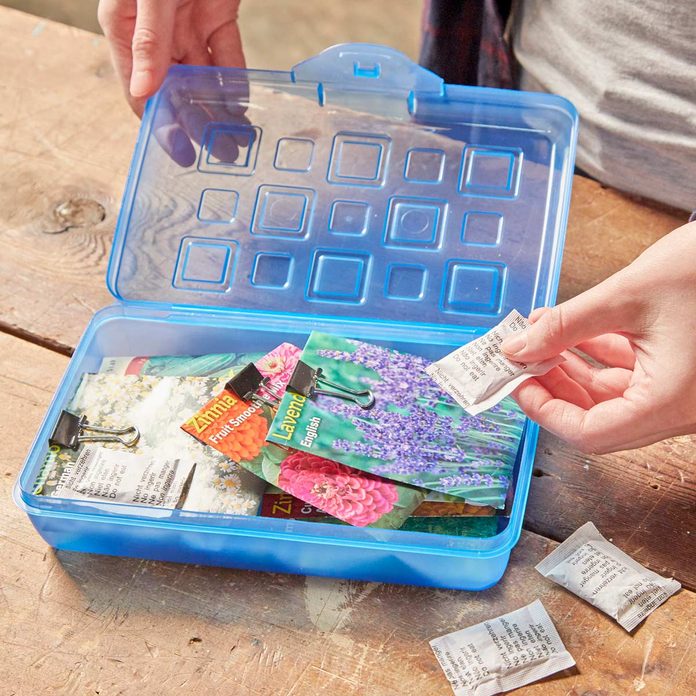
Keep Seeds Fresh
If you don’t use up all of your seed packets, store them in an airtight container with silica packets to keep them fresh for next year. The silica packets prevent the seeds from germinating or getting moldy.

Pole Protection
To protect my fishing rods in the back of the truck, I cover them with pool noodles. Cut the noodle and slip it over the rod. Depending on your rod style, use either one or two pieces of pool noodle. No more broken tips, thanks to an inexpensive pool noodle. — Tim Wurmlinger
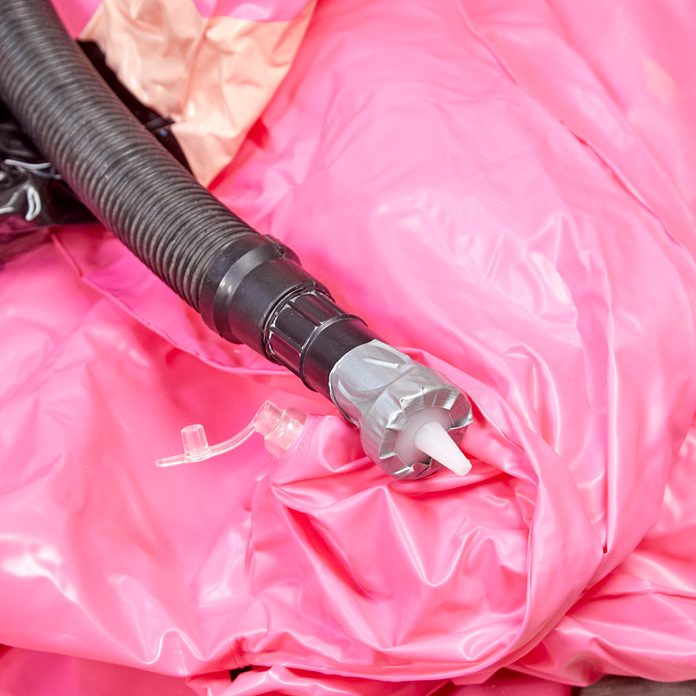
No Air Pump? No Problem. Use a Shop Vacuum.
If you don’t have an air compressor to inflate your air mattresses or pool toys, you can use your shop vacuum instead. Just pop the top off a plastic squeeze bottle and fit the top to your vacuum’s hose. You may have to use duct tape. Once the top is secured to the hose, attach the hose to your vacuum’s exhaust port. It’ll blow up your inflatables in no time. To deflate, attach the hose to the vacuum port and suck the air out.
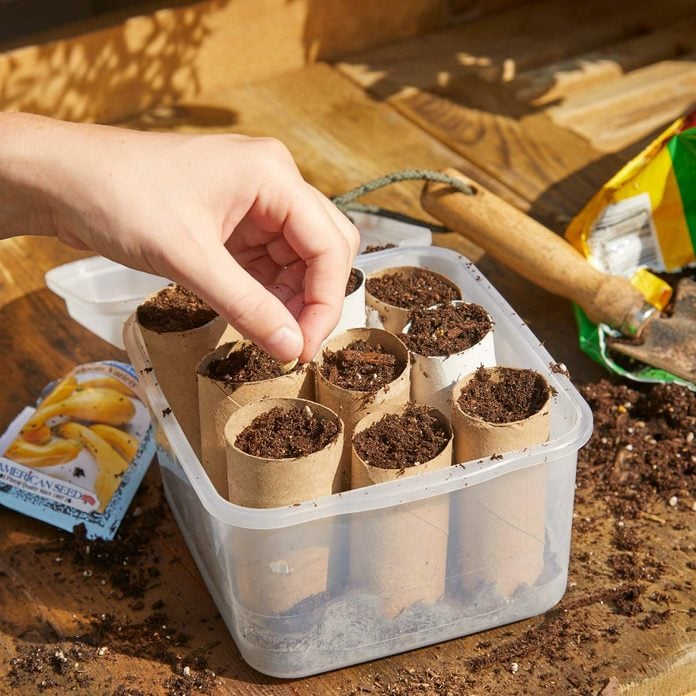
Cardboard Seed Tubes
For an easy and green way to start seeds, save your toilet paper and paper towel tubes. Cut the tubes into 2 in. lengths and set them in a waterproof tray. Fill the tubes with potting soil and plant your seeds. When the seedlings are ready to move to the garden, plant them right in their cardboard tube. The cardboard will decompose. Be sure to keep the tube below the soil surface, so it doesn’t wick moisture away from the roots.
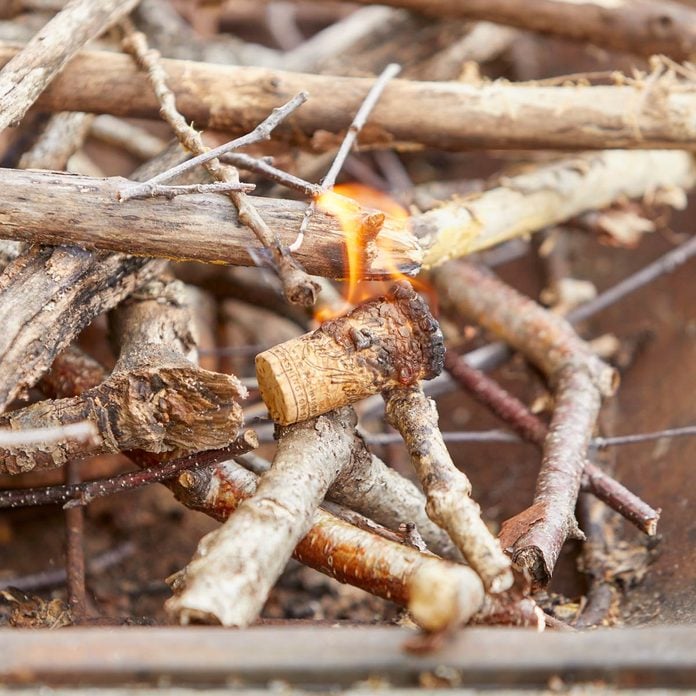
Wine Cork Fire Starters
Fill a mason jar with wine corks and rubbing alcohol, and let the corks soak. The corks will burn ok in a couple days, but for best results, soak them for a week. Be sure the corks are natural, not synthetic.
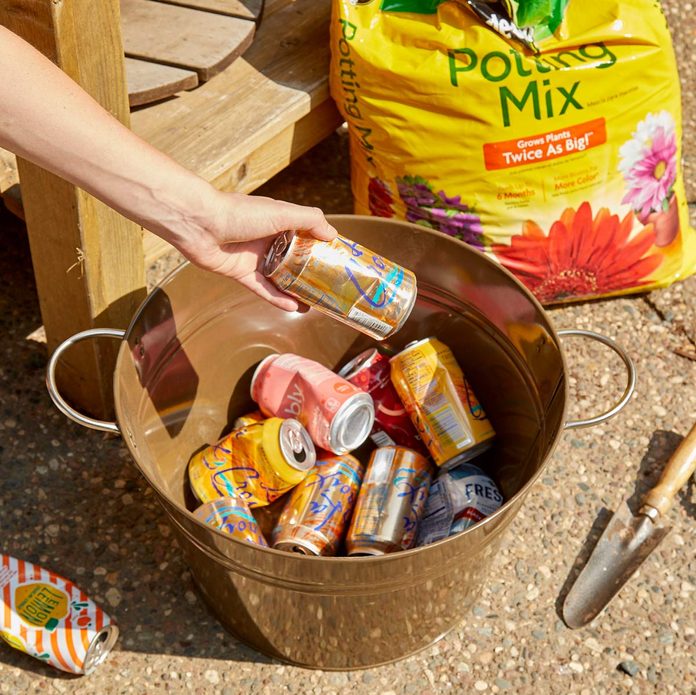
Saving Soil with Old Cans
For deep planters, fill the bottom with old cans and plant pots. The cans and pots improve drainage and create air pockets for better aeration and healthier soil.
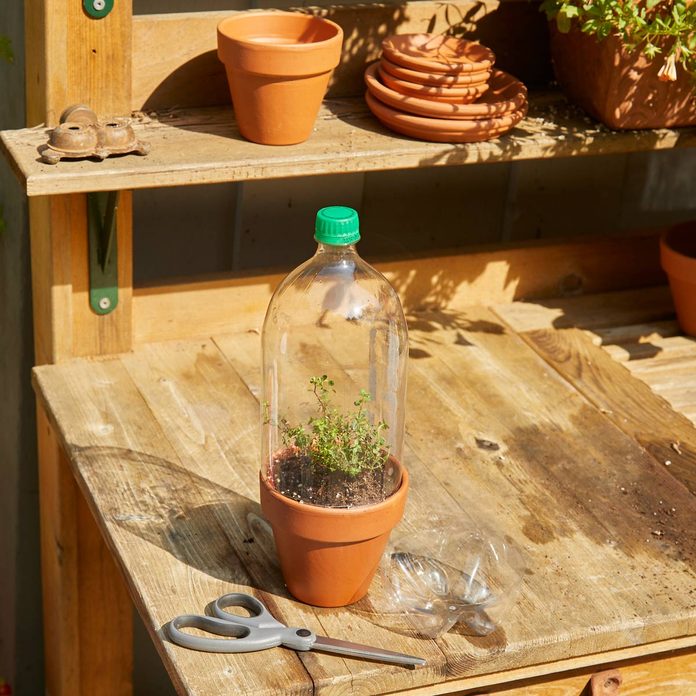
Micro Greenhouse
Do you have a hard time starting seeds or cuttings? Try soda bottle greenhouses. Cut the bottom off 2-liter soda bottles and remove the labels. Each seed gets its own micro greenhouse. Remove the greenhouses once the seeds have germinated and cuttings are rooted.
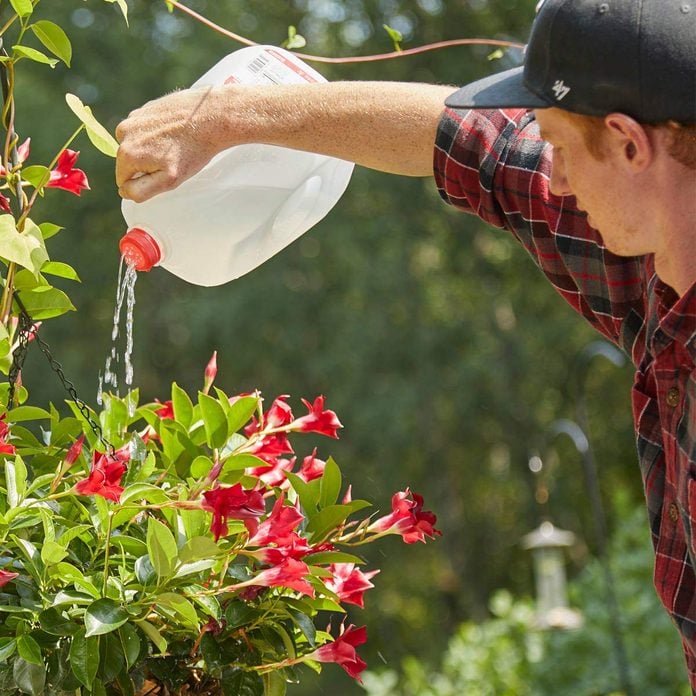
How to Turn an Empty Milk Jug Into a Watering Can
I only own one watering can, so I need to refill it four or five times to water all of the plants on my patio. Instead of buying more overpriced watering cans, I use old milk jugs. I drill a few holes in the caps, fill up the jugs with water and I’m good to go. — Harrison Berg
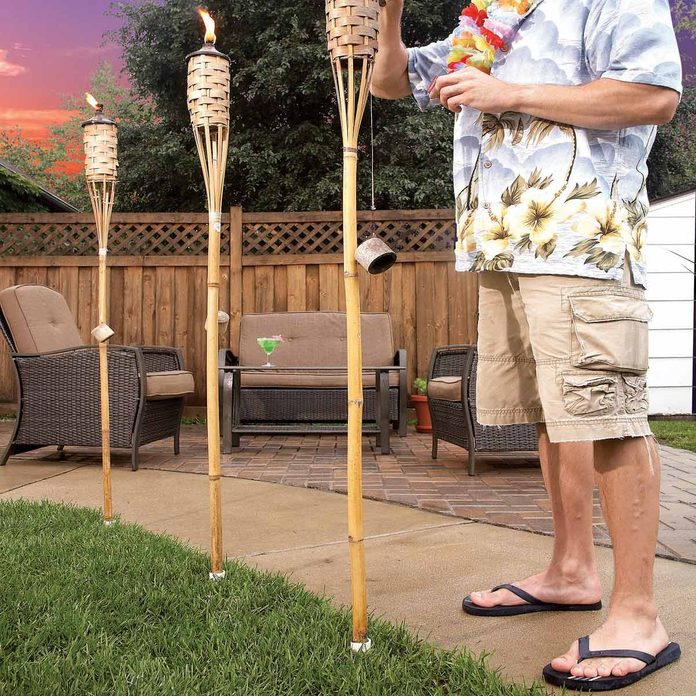
Permanent Tiki Torch PVC Holders
We like to set tiki torches around our patio in the backyard. But the ground is rock hard, so it’s not easy to push them in, and I didn’t want to remove them every time I had to mow. I came up with this solution: I cut 5-in,-long pieces of PVC pipe to hold the torches and used to maul and a block of wood to pound them into the ground. (I had to pull them out a couple of times during the process to dig out the clag plugs.) Now I just slip the torches in and out of the sleeves, and I can mow right over the PVD holders without a problem. — Doug Russ
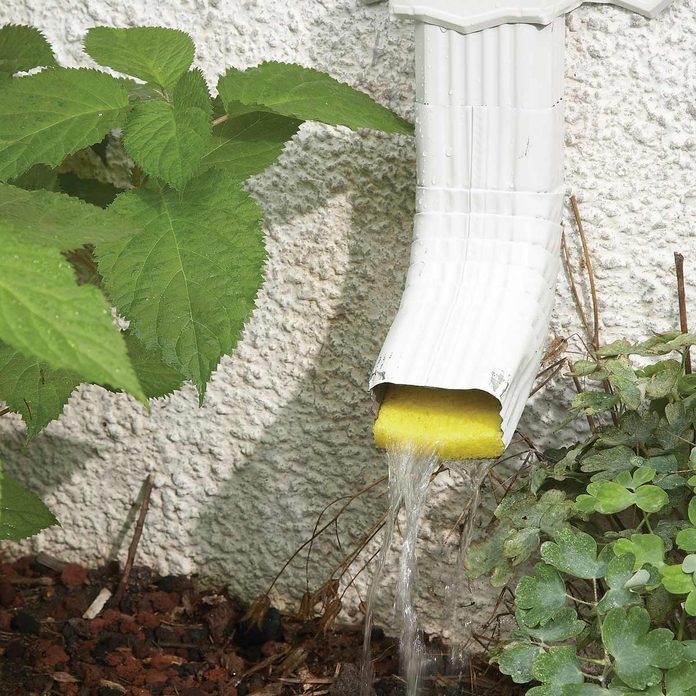
Noisy-Drip Stopper
Do you have a noisy drip coming from the downspout that’s driving you nuts? I discovered an easy way to stop the drip — just push a kitchen sponge into the bottom of the downspout. It’ll muffle the dripping noise without blocking the water flow. — Susan Dahl
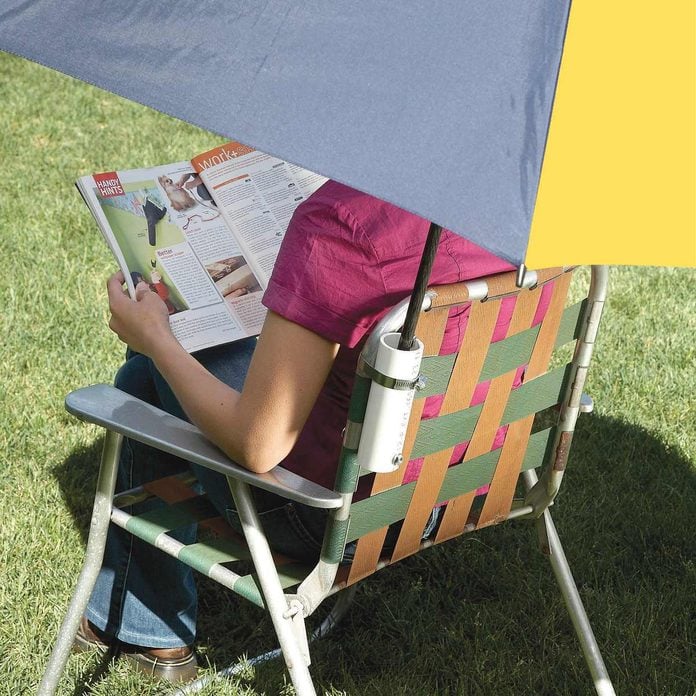
Lawn Chair Umbrella Holder
My wife and I love to watch our grandkids play outdoor sports. To escape the hot sun, we always take along our large golf umbrella. The umbrella shades both our chairs, but holding it the whole game gets tiring. I came up with this simple umbrella holder, which clamps right to the lawn chair. Bolt a piece of 1-1/2-in. PVC to the chair and secure it with a 4-in. hose clamp. It works great, and all you have to remember is to collapse the umbrella when you get up or a sudden breeze will blow it over. — Joseph Connell
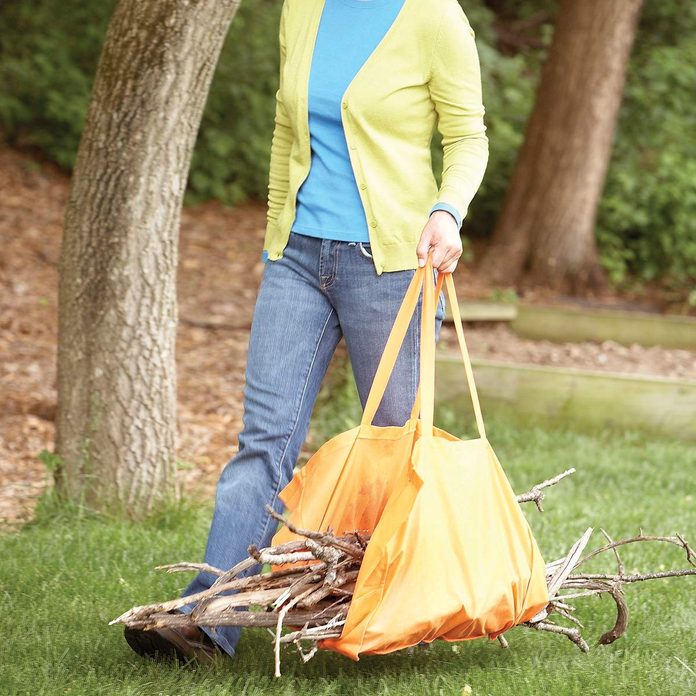
Handy Branch Hauler
Need a way to haul branches over to your fire pit? Carrying them in your arms is dirty work and trying to stuff them into a plastic bag is awkward. try using a sturdy plastic shopping bag with handles. Slit the sides, lay it flat, and fill it with branches and small logs. It loads easily and lets you carry wood without getting your clothes full of sap or mud.
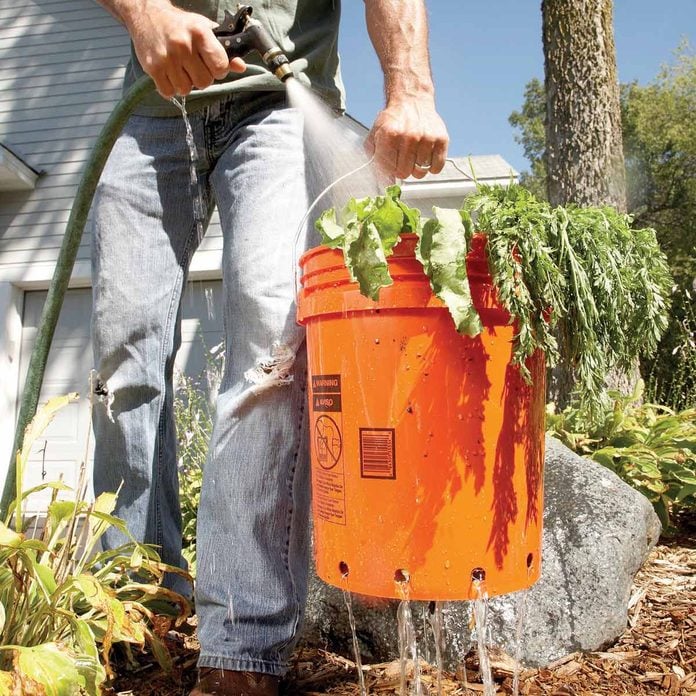
Simple Veggie Washer
We love growing fresh vegetables in our large garden, but we hate all the dirt that comes inside when we pick them. My husband came up with this great veggie washer. Drill holes in the bottom and sides of a 5-gallon bucket with a 5/8-in. spade bit. Place your fresh-picked veggies in the bucket and hose them off before you bring them inside. The dirt and sand stay out in the garden and only the veggies end up in your kitchen. — Linda Blain

Shady Flower Shelf
Here’s a beautiful idea for sprucing up the crotch of a tree. Make yourself a shady plant shelf. Just measure the gap and cut your shelving to fit. Cut a notch in each side of your board so that it “hugs” the tree and sits securely. Set your shelf gently inside the crotch of your tree, place your shade-loving plants on it and enjoy your blooms all season long.

Water Break on the Go
I don’t want to stop mowing the lawn just to run into the house for a drink of water, so I attached a bicycle water bottle holder to the mower arm. Now I fill up the bottle at the start and take my water breaks without breaking my stride. — Bill Magazzina
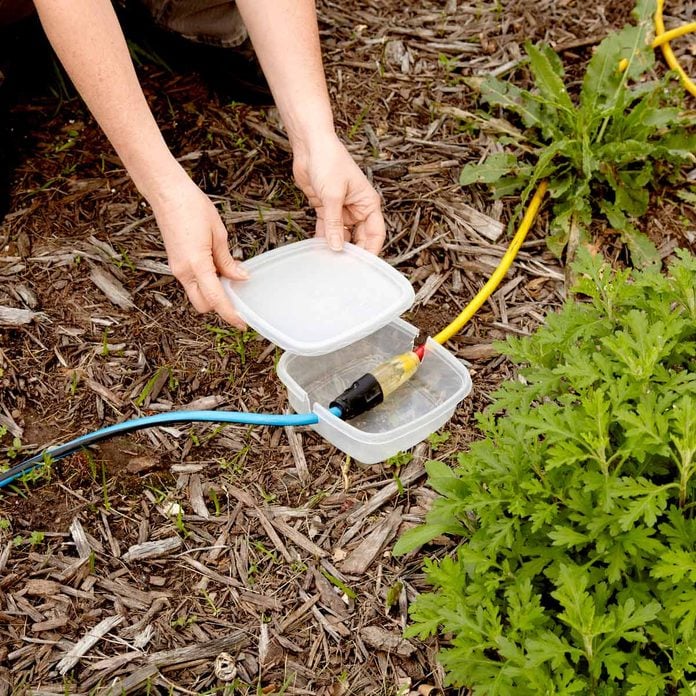
Temporary Extension Cord Protection
If you’re having a graduation party or some other occasional event out in the yard, you may require extra electricity to power festive string lights, for example. Here’s a great way to keep extension cord plugs dry. Cut notches in the opposite sides of a reusable plastic container and snap on the lid. Your plugs will stay dry if it happens to rain or the ground is moist.
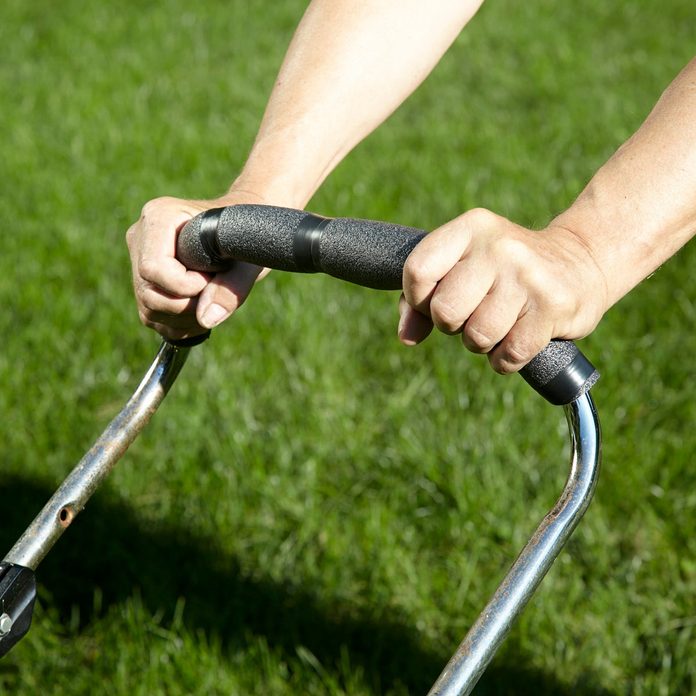
Mowing in Comfort
My mower is now a pleasure to use thanks to the pipe insulation taped to the handle. I used to get numb hands and blisters (we have a big yard!) from the bare metal handle. Make sure the insulation doesn’t interfere with your auto-shutoff bar, if you have one. — Joe Eisenbraun
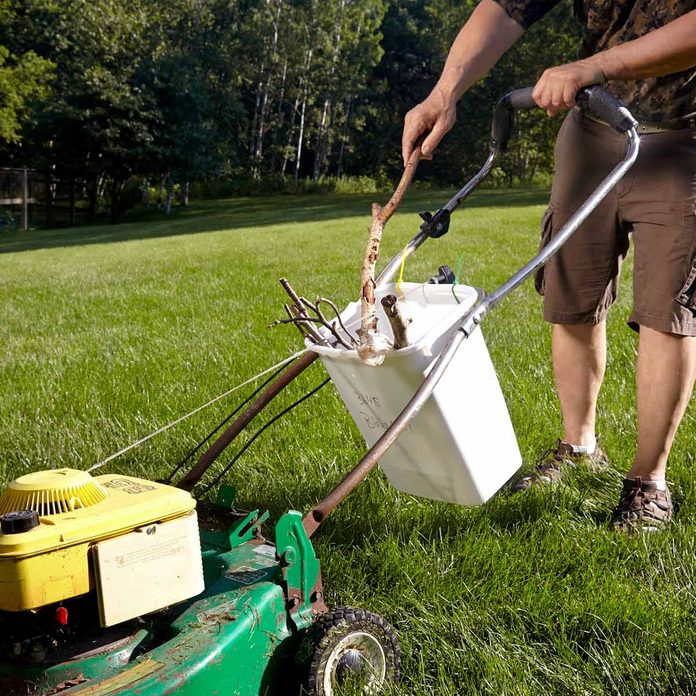
Lawn Mower Hack
Before I mow, I usually go around and pick up fallen twigs and other debris. Inevitably, I miss some and have to stop and pick it up. To solve the problem, I attached a wastebasket to my mower. Now when wrappers, cans and sticks suddenly appear, I can stuff them into my basket and keep moving. — Jared Reiners
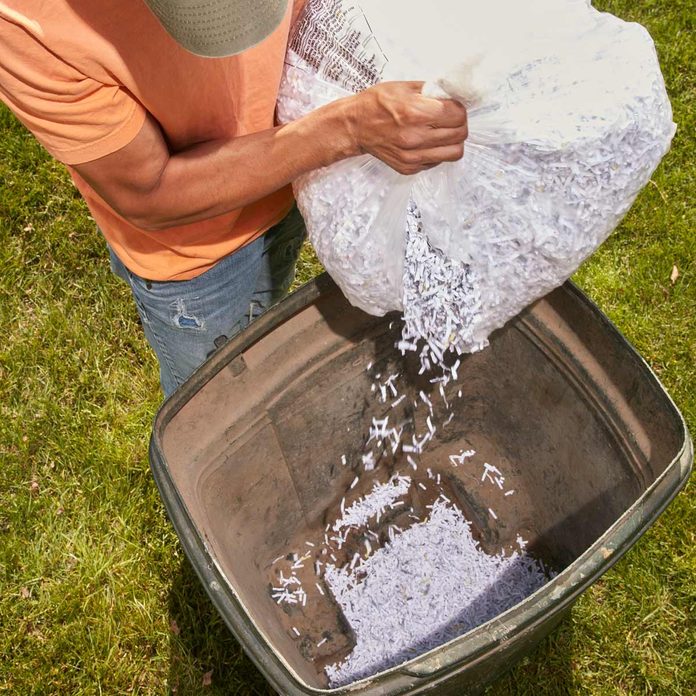
No More Smelly Lawn Clippings
After mowing, dump all of your lawn clippings into a “green refuse” bin. But after a day or so, the grass clippings turn into a slimy, smelly mess. To combat the stench, raid your electric paper shredder and through a few handfuls of shredded paper into the bottom of the barrel. The paper helps absorb the moisture and reduce the smell. — Emil Machrone
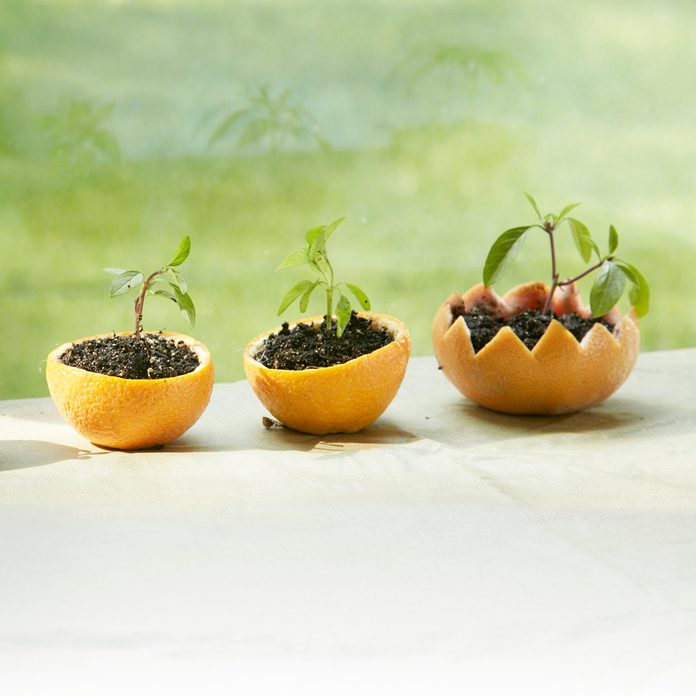
Citrus Rind Seed Starters
Grapefruit, orange and other citrus rinds are just the right size for starting new seedlings. Make a hole in the bottom of each one for drainage and add some damp seed-starting mix and seeds. Then, when it’s time to move them outside, plant the whole works in the ground—peels and all. The citrus rinds make the soil more acidic, however, so only do this with acid-loving plants like radishes, peppers and the like. — Judy Wilder
